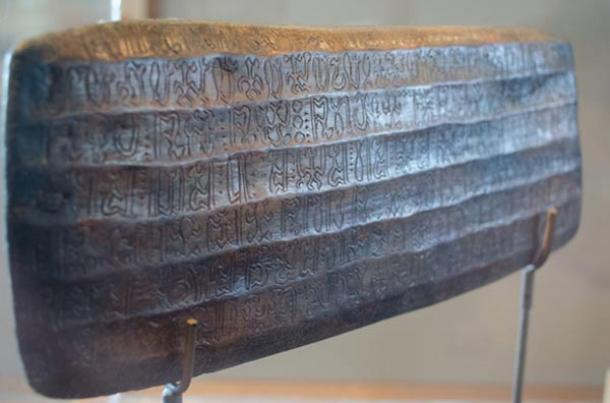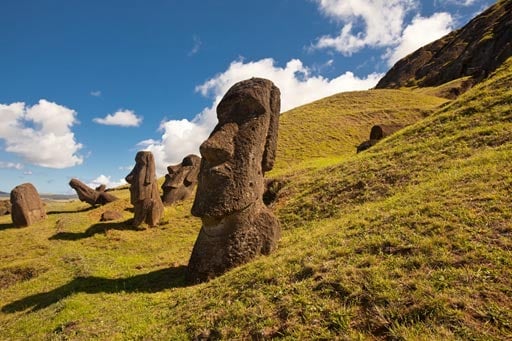
During the 19th Century, ancient artifacts containing a set of etched symbols were discovered on the world-renowned Easter Island, a small remote island located a few thousand miles west of South America, and famous for the hundreds of giant monolithic anthropomorphic statues called moai. The intricate designs appear to be glyphs, or a form of writing, but the meaning of the glyphs has never been deciphered. Some believe that decoding the mysterious writing could offer answers into what caused the collapse of the ancient Easter Island civilization.

The famous moai of Easter Island (BigStockPhoto)
The Rongorongo writing was first discovered by Eugène Eyraud, a lay friar of the Roman Catholic Church, who went to Easter Island as a missionary on January 2, 1864. In an account of his visit, he wrote of his discovery of twenty-six wooden tablets containing the unusual inscriptions: